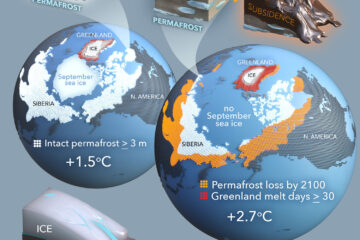Restoration of a ponderosa pine forest increases soil CO2 efflux more than either water or nitrogen additions
1. Ecological restoration often involves returning ecosystem structure to some predisturbance
reference state, but ecosystem function must also recover if restoration efforts are to be self-sustaining
over the long term. In the south-western United States, ponderosa pine forest structure was altered
by disruption of the fire regime following Euro-American settlement. Forest structure is now being
restored to presettlement conditions through the application of thinning and burning treatments.
However, the effects of these treatments on below-ground ecosystem processes remain unclear.
2. We conducted a water and nitrogen (N) addition experiment in adjacent restored and unrestored
ponderosa pine stands and compared soil CO2 efflux in response to these treatments over a 13-month
period. Our goals were to (i) quantify water and N limitation to below-ground carbon (C) cycling
in contemporary high-density ponderosa pine forests; and (ii) determine if restoration alleviates
water and N limitations.
3. Restoration thinning and burning increased soil CO2 efflux, along with surface soil watercontent, temperature and herbaceous fine root biomass, while total fine root biomass decreased asa result of restoration.
4. Water and N additions increased C flux from soils to a similar degree in both restored and
unrestored ponderosa pine stands, but the increase was relatively small when compared to that
stimulated by restoration.
5. Synthesis and applications. An understanding of how ecosystem processes respond to treatments
designed to restore ecosystem structure is critical in ensuring the long-term success of restoration
efforts. Here we show that, although water and N stimulate C flux from soils in these semi-arid
forests, restoration treatments have a much greater effect on soil C balance than increased water and N availability by themselves. This suggests that increased quality of C inputs from a recovering
understorey herbaceous community is a key component of restoring ecosystem function (e.g.
below-ground C cycling) in south-western ponderosa pine forests.


